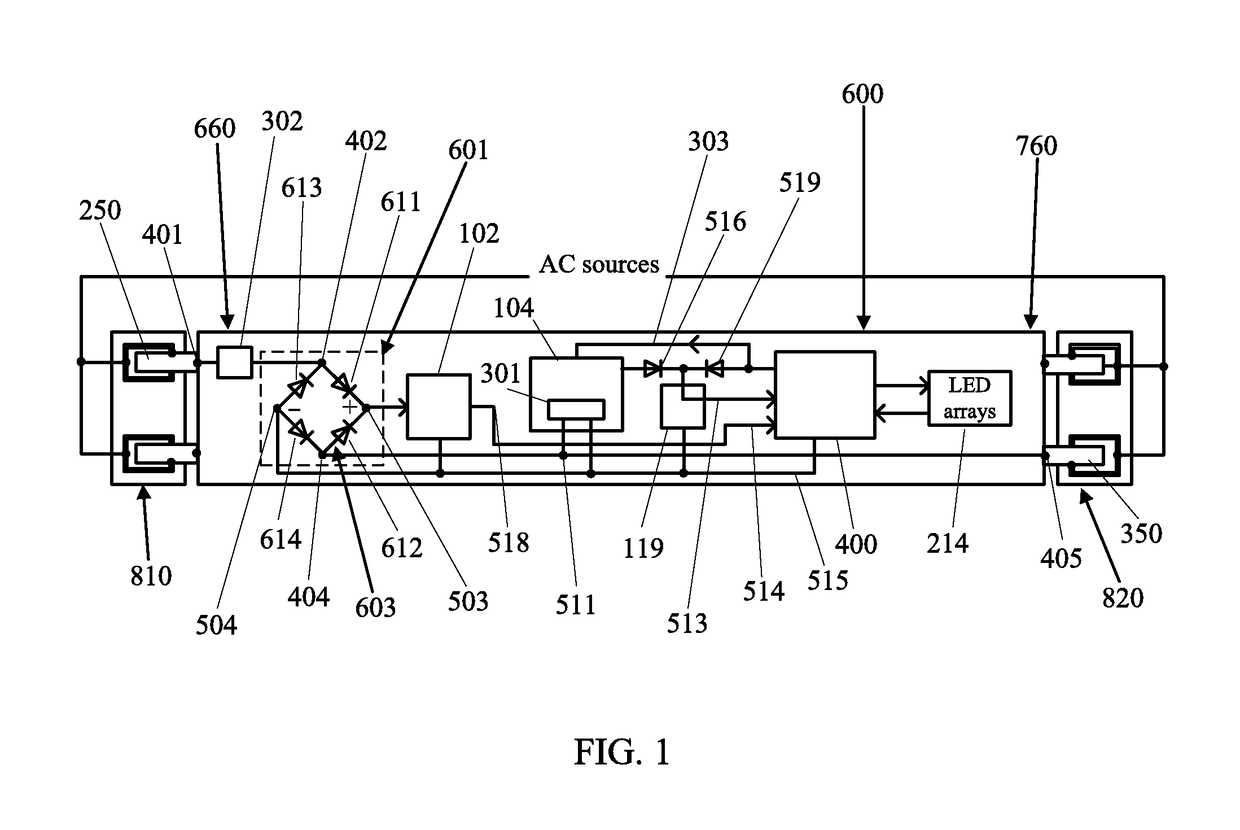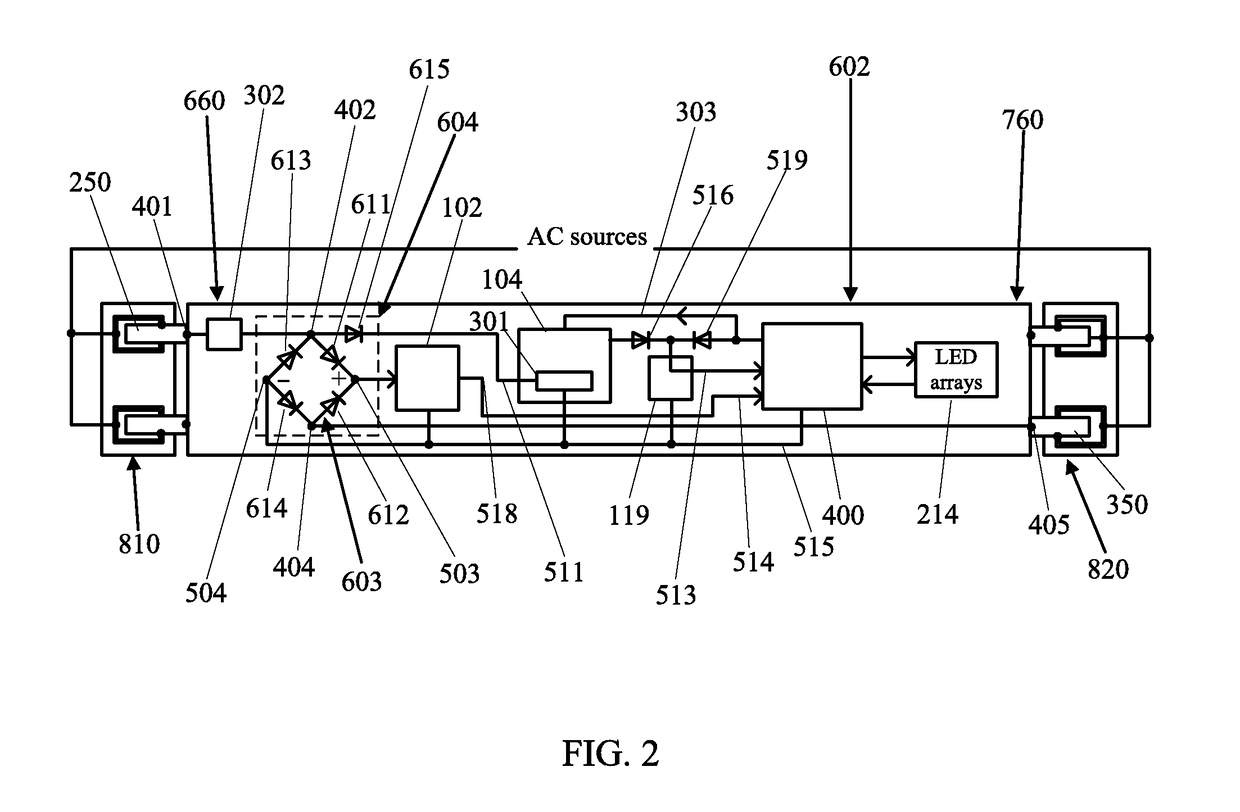If the existing
ballast is not compatible with the
ballast-compatible LLT lamp, the consumers will have to replace the
ballast.
Some facilities built long time ago incorporate different types of fixtures, which requires extensive labor for both identifying ballasts and replacing incompatible ones.
Maintenance will be complicated, sometimes for lamps and sometimes for ballasts.
The labor costs and long-term maintenance costs will be unacceptable to end users.
In this sense, any energy saved while using the ballast-compatible LLT lamps becomes meaningless with the constant energy use by the ballast.
In the long run, ballast-compatible LLT lamps are more expensive and less efficient than self-sustaining AC mains-operable LLT lamps.
All of such LLT lamps, no matter whether AC mains-operable or ballast-compatible, are electrically wired as double-ended and have one construction issue related to product safety and needed to be resolved prior to
wide field deployment.
This kind of LLT lamps, if no
shock prevention scheme is adopted in, always fails a safety test, which measures a through-lamp
electric shock current.
Because an AC-mains voltage applies to both opposite ends of the LLT lamps, the measurement of current leakage from one end to the other consistently results in a substantial current flow, which may present a risk of an electric shock during re-lamping.
Although the LLT lamps used with a ballast can pass the current
leakage test, some kinds of electric shock hazards do exist.
Experimental results show that the
skin of the person who touches an exposed bi-pin may be burned due to such an electric shock.
However when used with the ballast, the
electrical contacts used in the conventional shock prevention switch can easily be burned out due to the high-voltage and high-frequency arcing introduced between each gap of each pair of the electrical contacts in the conventional shock prevention switch when someone tries to abusively tweak to remove the tube lamp from the fixture with the ballast that has a power on it.
Although such a situation is rare, an internal arcing, if occurred, does cause burning and even
welding of the electrical contacts and melting of the plastic
enclosure, so called internal fire, creating
consumer safety issues.
Not like LLT lamps with an external driver that is inherently electric-shock free if the driver can pass a
dielectric withstand test used in the industry, LLT lamps with an internal driver could have a shock
hazard during relamping or maintenance, when the substantial through-lamp electric shock current flows from any one of AC voltage inputs through the internal driver connecting to LED arrays to the earth ground.
Any products with electric shock or fire hazards and risk of injuries or deaths are absolutely not acceptable for consumers.
However, commercially available LLT lamps with internal drivers, single-ended or double-ended, fail to provide effective solutions to the problems of possible electric shock and internal arcing and fire.
However, a length control of the LLT lamp becomes critical to operate the LLT lamp because sometimes the double shock protection switches may not be actuated by the mechanical actuation mechanisms.
Also, the double shock protection switches directly control AC voltages such as 120 or 277 V / 50-60 Hz from the AC mains or 600 V / 45-65 kHz from the ballasts, which makes the conventional LLT lamp so vulnerable because such high voltages working on the double shock protection switches may easily cause internal fire if consumers abusively tweak the mechanical actuation mechanisms at both ends of the LLT lamp operable with a ballast during relamping.
As mentioned above, when the electric shock occurs, the first DC voltage is built up in the power sustaining device but not high enough to operate the PFC and control device.
As mentioned above, when the electric shock occurs, the power sustaining device builds up the first DC voltage, which is not high enough to operate the PFC and control device with the LED
driving circuit disabled.
 Login to View More
Login to View More  Login to View More
Login to View More 


